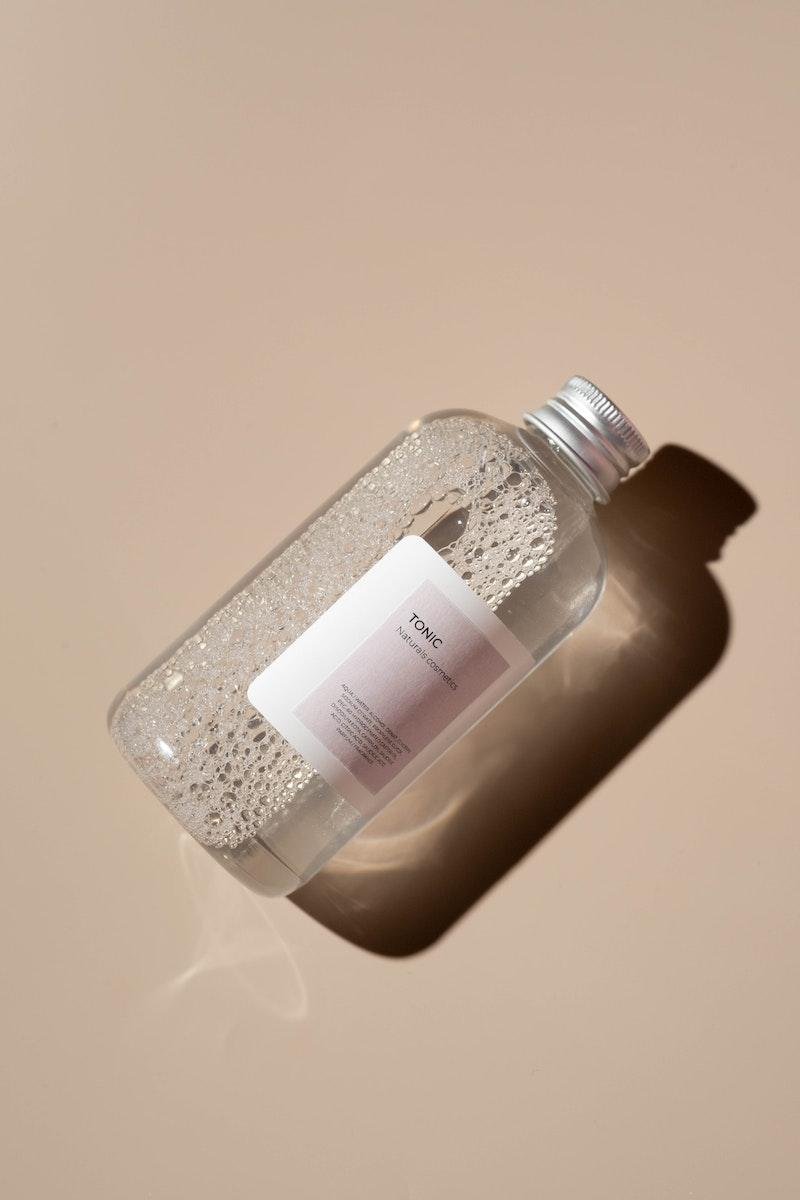Surfactants are key ingredients in skincare formulations, serving a vital role in cleansing, emulsifying, and enhancing the performance of skin and hair care products. These versatile chemical compounds have the ability to interact with both water and oil, making them effective in removing impurities, balancing moisture, and improving the efficacy of active ingredients in the skin. Understanding the role of surfactants in skincare can help individuals make informed choices when selecting products that cater to their specific skin type and needs. Below, we delve into the world of surfactants, exploring their functions, types, and benefits in the realm of skincare.
What are Surfactants?
Surfactants, short for surface-active agents, are chemical compounds that play a crucial role in various industries, including skincare. They are characterized by their unique molecular structure, which enables them to interact with both water and oil.
Some of the most common surfactants in skincare include:
- Sodium lauryl sulfate
- Cocamphocarboxyglycinate
- Cocoamidopropyl betaine
- Ammonium laureth sulfate
- Disodium lauryl sulfosuccinate
- Alpha-Olefin sulfonate
Due to their unique molecular structure, they are both popular and effective in many skincare products. Surfactants consist of a hydrophilic (water-loving) head and a hydrophobic (water-repellent) tail, allowing them to interact with both water and oil. When introduced to a mixture of water and oil, surfactants position themselves between the two substances. The hydrophilic head is attracted to water, while the hydrophobic tail is attracted to oil. This positioning reduces surface tension, facilitating the emulsion of water and oil together. In skincare, this is crucial for creating products that combine water-soluble and oil-soluble ingredients, such as cleansers and creams. Additionally, surfactants act as detergents, capable of dissolving and removing dirt, oil, and impurities from surfaces. The hydrophobic tail penetrates oily substances, allowing them to be easily rinsed away with water from the skin or hair.
Types of Surfactants in Skincare
Surfactants have different categories based on their ionic charge, which can be positive, negative, both, or none. The presence of an ionic charge determines the properties and functionalities of the surfactant, such as its ability to foam, cleanse, moisturize, or soften.
There are four main categories of surfactants: nonionic, anionic, cationic, and zwitterionic/amphoteric. Each category contains various surfactant ingredients commonly found in skincare and hair care products.
Here is a closer look at each type of surfactant, along with some common ingredient names to be aware of.
Nonionic Surfactants
Nonionic surfactants lack an ionic charge when dissolved. They are gentle and frequently found in cosmetics that prioritize moisturizing without the need for foaming or lathering, such as cream cleansers. These surfactants are effective in reducing irritations and possess excellent emollient properties, making them ideal for softening and soothing the skin. They offer emulsifying and solubilizing capabilities without causing excessive dryness or irritation.
Nonionic surfactants in skincare and haircare include:
- Polysorbate 20
- Polysorbate 80
- Ceteareth-20
- Ceteareth-12
- Ceteareth-30
- Decyl Glucoside
- Coco-Glucoside
- Lauryl Glucoside
- PEG-80 Sorbitan Laurate
Anionic Surfactants
Anionic surfactants carry a negative charge on their hydrophilic head. When people discuss “bad sulfates” or “sulfate-free” products these are often the ingredients they’re trying to avoid. They are typically derived from fatty acids or sulfonated or sulfated compounds and can effectively eliminate oil and dirt from the surface of your skin. Anionic surfactants are often used as primary detergents in soaps, shampoos, and cosmetics due to their powerful cleansing and foaming properties, which makes them ideal for oily skin. However, it’s important to note that they can be harsh and irritating, especially for those with sensitive skin. Anionic surfactants are incredibly potent and the most commonly utilized type of cleaning chemical.
Common anionic surfactants in skincare and haircare include:
- Sodium Lauryl Sulfate (SLS)
- Sodium Laureth Sulfate (SLES)
- Ammonium Lauryl Sulfate (ALS)
- Ammonium Laureth Sulfate (ALES)
- Sodium Coco Sulfate
- Sodium Cocoyl Isethionate (SCI)
- Sodium Lauroyl Sarcosinate
- Sodium Cocoyl Glutamate
Cationic Surfactants
Cationic surfactants have a positive charge on their hydrophilic head, which makes them less effective at cleansing compared to other surfactants. While not effective as cleansers, they have valuable conditioning effects. Due to their positive charge, they more easily attach to negatively charged skin and hair, providing a protective, softening, and smoothing effect. In haircare, this reduces frizz and enhances manageability. However, excessive use of cationic surfactants can have adverse effects on the skin and hair.
Common cationic surfactants include:
- Cetyltrimethylammonium chloride (CTAC)
- Stearalkonium Chloride
- Behentrimonium Chloride
- Distearyldimonium Chloride
- Quaternium-80
Zwitterionic/Amphoteric Surfactants
Zwitterionic surfactants, also known as amphoteric surfactants, contain both positive and negative charges within a single molecule. Derived from amino acids or betaines, they offer gentle cleansing and conditioning effects while maintaining the skin’s moisture balance and can even adjust pH levels for a soothing effect. With low toxicity and excellent antibacterial properties, zwitterionic surfactants are gentle on the skin. Additionally, amphoteric surfactants have reduced potential for skin and eye irritation, making them popular for baby products and products designed for sensitive skin.
Popular zwitterionic/amphoteric surfactants in skincare include:
- Cocamidopropyl Betaine (CAPB)
- Coco-Betaine
- Cocamidopropyl Hydroxysultaine
- Disodium Cocoamphodiacetate
- Disodium Laureth Sulfosuccinate
- Lauryl Betaine
- Disodium Lauroamphodiacetate
The Role of Surfactants in Skin & Hair Care
Surfactants are a versatile chemical compound frequently found in skin and hair products. Different types of surfactants have different properties, which is why it is so important to make sure your products contain the right surfactants to target your concerns. Below, we cover some of the key properties of surfactants in skin and hair care.
Cleansing
Surfactants have excellent cleansing properties, enabling them to remove dirt, oil, sweat, and other impurities from the skin or hair. They achieve this by reducing the surface tension between water and oil, allowing them to break down and lift away these substances. When surfactants are applied to the skin or hair and mixed with water, they form micelles that encapsulate and solubilize the impurities, making them easier to rinse off. Surfactants actively contribute to the removal of dirt, oil, and impurities from the skin, promoting cleanliness and hygiene. Their ability to reduce surface tension and form micelles allows them to effectively bind and solubilize these substances, facilitating their removal during rinsing.
Foaming
Surfactants contribute to the creation of lather and foam in skincare products. While not essential for effective cleansing, the presence of foam enhances the sensory experience and perception of cleanliness during product use. Surfactants with foaming properties trap air when agitated or mixed with water, generating bubbles and foam.
Emulsifying
Surfactants play a crucial role in emulsifying oil and water-based ingredients in skincare formulations, as well as the emulsification of oil-based cleansers used in the double-cleansing method. They have both hydrophilic and hydrophobic properties, allowing them to stabilize mixtures of water and oil. By forming emulsions, surfactants ensure tan even distribution and prevention of separation between different components, resulting in stable and visually appealing products.
Conditioning & Moisturizing
Some surfactants have conditioning and moisturizing effects which reduce water loss from the skin and improve hydration levels. Cationic surfactants, known for their moisturizing capabilities, and nonionic surfactants, derived from fatty alcohols, are some examples. Surfactants with mild formulations and balanced pH levels also help maintain the skin’s natural barrier, composed of sebum and oils, regulating pH and protecting against irritants. Using gentle surfactants with a pH similar to the skin minimizes disruption to the skin barrier.
Solubilizing
Surfactants are vital for enhancing the absorption of active ingredients in skincare products. They improve solubility and dispersibility, which allows these ingredients to penetrate deeper into the skin. This enhances the delivery and effectiveness of skincare ingredients, resulting in improved skin condition and appearance.
Are Surfactants Safe for Skin?
In general, surfactants are safe in skincare.
Sensitive skin individuals need to be cautious when using skincare products containing surfactants, particularly anionic sulfates such as SLS and SLES, as they are more likely to cause irritation or dryness. To minimize this risk, look for products that contain milder surfactants and are specifically formulated for sensitive skin such as those derived from betaine. These alternatives are less likely to irritate and damage the skin, and have soothing properties.
In addition to personal skin concerns, it is also important to be mindful of the environmental impact of surfactants in skincare. Unsustainable sourcing and manufacturing practices can damage ecosystems and water systems. To alleviate these concerns, the skincare industry is actively exploring and promoting eco-friendly alternatives to traditional surfactants. These alternatives, such as plant-derived or biodegradable surfactants, offer similar functionality while being more environmentally friendly.





